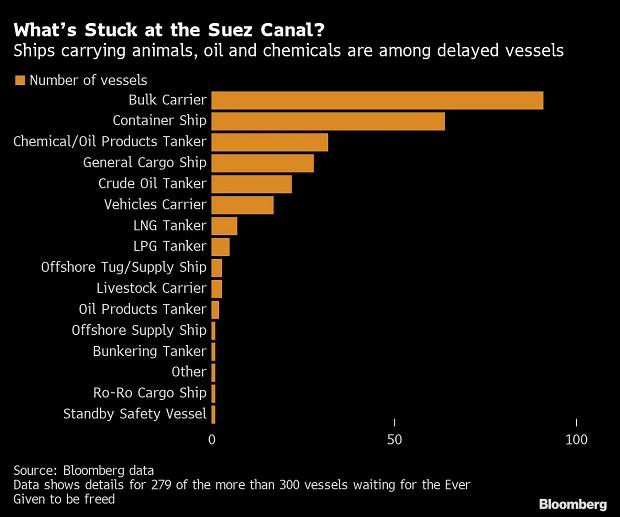Shudders ran down the spine of the global trading community this week as the colossal 400 hundred metre cargo blocked the Suez Canal. A 400-metre cargo vessel, more than double the size of Statue of Unity, continues to block Egypt’s significant Suez Canal, which separates Africa from middle east and Asia, three days after losing control while entering the narrow passage from the Red Sea.
Reportedly, the ship ran aground and became lodged sideway on Tuesday after a gust of wind blew it off course. Reportedly, the 400-metre cargo ship is blocking one of the world’s busiest trade routes, causing a huge tailback of other ships trying to pass through the Suez Canal.

The blockade since march 23 is emphatically affecting India’s supply lines as there are 200 vessels that are stuck in the north and south sides of the canal. Reportedly, the number at the current rate is likely to go up to 350 in the next few days. The significance of the Suez Canal can be deciphered, given the fact that on an average day, more than 50 ships cross the canal that connects the Mediterranean Sea and the Red Sea.
As a consequence of the canal blockade, machine parts used in assembly lines, basic chemicals such as phenol and aniline can get delayed. Additionally, according to an estimate by Shipsy, an export import automation platform, the blockage could result in a 5-15% hike in freight rates from India along key lines. For India, the Suez Canal blockade proves to be ominous as India’s trade with these geographies through the Suez Canal amounts to $200 billion annually.

Soham Choksi, cofounder of Shipsy stated that “This incident couldn’t come at a worse time, when the freight rates were just showing signs of softening after surging as much as 4x-8x across various lanes,”.
To tackle the detestable problem, Indian authorities have chalked out a 4-point plan. The government is prioritizing the vessels which are carrying perishables and are considering alternate, additional methods to reduce the losses as much as possible.
The logistics division, department of commerce & shipping and waterways, has chalked out a strategy to advise ships to re-route via cape of Good Hope. It has been reported that 160 ships have been stuck in the 193-km long canal since Tuesday, waiting for authorities to refloat the vessel and clear the passage.
The government has presently decided to work the channels to ensure that Freight Rates remain the same as per existing contracts. Additionally, the government has also been making requests to the shipping lines to maintain stability in freight rates during the period of crisis.
In a statement issued by the commerce ministry, it said, “Blockage of Suez Canal since 23rd March 2021 is seriously hitting the global trade. It was noted in the meeting that over 200 vessels are waiting on the North and South sides of the Suez Canal and about 60 vessels are getting added to the queue on a daily basis.”
The ministry of commerce has estimated the losses from the block of the canal to be hundreds of crores. To put the estimate of loses for India in numbers, the canal route was used for Indian imports and exports worth $ 200 billion to and from North America , south America and Europe.
Not only does India find itself in troubled waters, but also the businesses around the world which are currently shuddering at the estimates of the profits the blockage can cost them. Recently, Global oil prices have shot up 6 percent overnight, and already-high freight rates have spiked further.
Around 13 million barrels of crude oil and oil products have been reportedly held up at the canal. Millions of containers carrying everything from grains to chilled meat and furniture are trapped on the not-so-high seas.
Almost immediately, ports in Europe and Asia have gummed up as ships bound for the Suez Canal were forced to idle. Import-dependent Asian economies such as China and South Korea have anxiously reviewed stockpiles of crude oil, liquefied petroleum gas, grains and food products.
Depending on how quickly the blockage clears, trade disruptions may only be temporary, but the accident is a clear reminder of the vulnerabilities of global trade and its long, complex supply chains.

